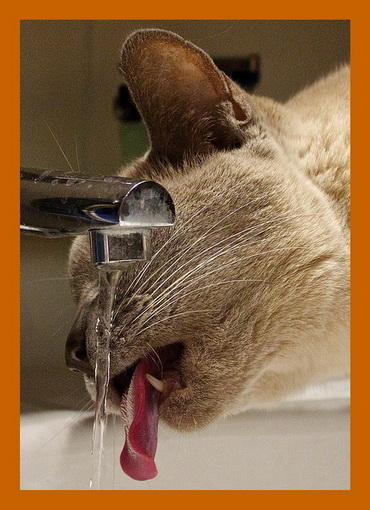Diabetic Cat Care
USG Test
Urine Specific Gravity
Explained

Information provided about specific medical procedures or conditions is for educational purposes to allow for educated, on-going discussion with your vet and is not intended to replace veterinary advice.
|
Diabetic Cat Care
USG Test
Urine Specific Gravity
Explained
|
 |
When it comes to FD cats,
how their kidneys are functioning and how much damage the diabetes might be
causing is one of our primary concerns. The
USG (urine specific gravity) test
indicates how concentrated your cat’s urine is (whether it is dilute or
undiluted, indicating how much water it contains)
and as well gives an actual diagnostic value to the actual level of kidney function.
There is a new test out by Idexx which claims to catch kidney disease earlier,
the
SDMA - however, this test does not give as clear or as well understood a
bench mark value when it comes to
actual kidney function. While the SDMA is a valid test to have done, when it
comes to FD cats, the USG is a far better indicator as to how much the diabetes
might be affecting the kidneys.
Collecting a urine sample for USG measurement can be done at your veterinarian’s office (using sterile non-absorbent litter, a syringe procedure (aka cysto (cystocentesis), or even by catheter) or.......if you are lucky enough to have a very co-operative cat, a sample can be taken at home but must be delivered to the vet clinic within an hour's time frame from the time it has been collected.
Your vet may carry plastic type
pellets which can be put in a sterilized litter box. The plastic pellets
are not absorbent like traditional litter is so once the cat urinates, the
sample can be collected relatively easily and put into a sterile jar to take to
the vet. To encourage your cat to drink
and then urinate, locking them in a room with the sterile litter box
with the pellets and a bowl of
water or no salt chicken broth for a few hours may help. For a USG
to be most accurate it must be a fresh sample - if
taken at home, it is
imperative to get the sample to the vet right away!
There
are many substances which can be used to sterilize a litter box; the problem
being the smell of certain products used to do so, bleach for example, may put
your cat off using the litter box afterwards. The best (and safest
approach) to sterilizing a litter box is to clean it well with hot soapy water,
rinse well, then use ordinary household white vinegar, rinse with water once
more and make sure it is dry before putting the non-absorbent pellets obtained
from the vet. The pellets come in a very small container and will not
"fill" the litter box, they are used to satisfy the natural instinct for cats to
"scratch a spot prior to urination.
Should your cat’s USG be abnormal, other
blood/urine tests will be recommended to try to find out why.
It is likely your vet will analyze
the USG right in their clinic
and provide you with results the same day. Most
veterinarians perform the urine SG test in the office and have results the same
day. The test itself uses a small amount of urine which is placed on a
“refractometer”, allowing the vet to measure how concentrated the cat’s urine
is.
Many health issues can cause USG
results to be abnormal; for example, dehydration, diabetes, hyperthyroidism, and
kidney disease. In addition, if your cat has been drinking more water than
usual, the USG result may be temporarily low (indicating diluted urine), or if
your pet hasn’t had water for a number of hours or is dehydrated, the USG result
may be higher because it is more concentrated than normal (undiluted).
Even with abnormal USG results, it is possible your cat may be healthy where
their kidneys are concerned and is why when diagnosing kidney disease, USG
results are considered in conjunction with other “kidney” related values coming
from blood work results.
If kidney disease is suspected,
additional
urine
tests may be required
as well as full blood work,
x-rays, and ultrasound.
©
2009-2024
Diabetic Cat Care - DCC's
information may be used on other websites (with restrictions), for more
information read
All Rights Reserved